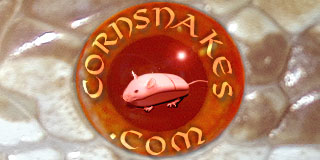Snake Queen
rakes snock!
I have three corns, 2.5 (fem), 2 (fem), and 1.5 (male) years old. I have one male, and plan to breed them. But, here is my question.
I recently bought the Cornsnake Manual, by Kathy Love, and it sows you how you can tellthe difference between male and female by observing the tails. I did this with my snakes, and the male... doesnt look any different than the females. He was designated a male when i bought him. I was wondering, is it ok to put him in with the females, if there is a chance that he is a she? Will there be any problems?
He was designated a male when i bought him. I was wondering, is it ok to put him in with the females, if there is a chance that he is a she? Will there be any problems?
I recently bought the Cornsnake Manual, by Kathy Love, and it sows you how you can tellthe difference between male and female by observing the tails. I did this with my snakes, and the male... doesnt look any different than the females.
